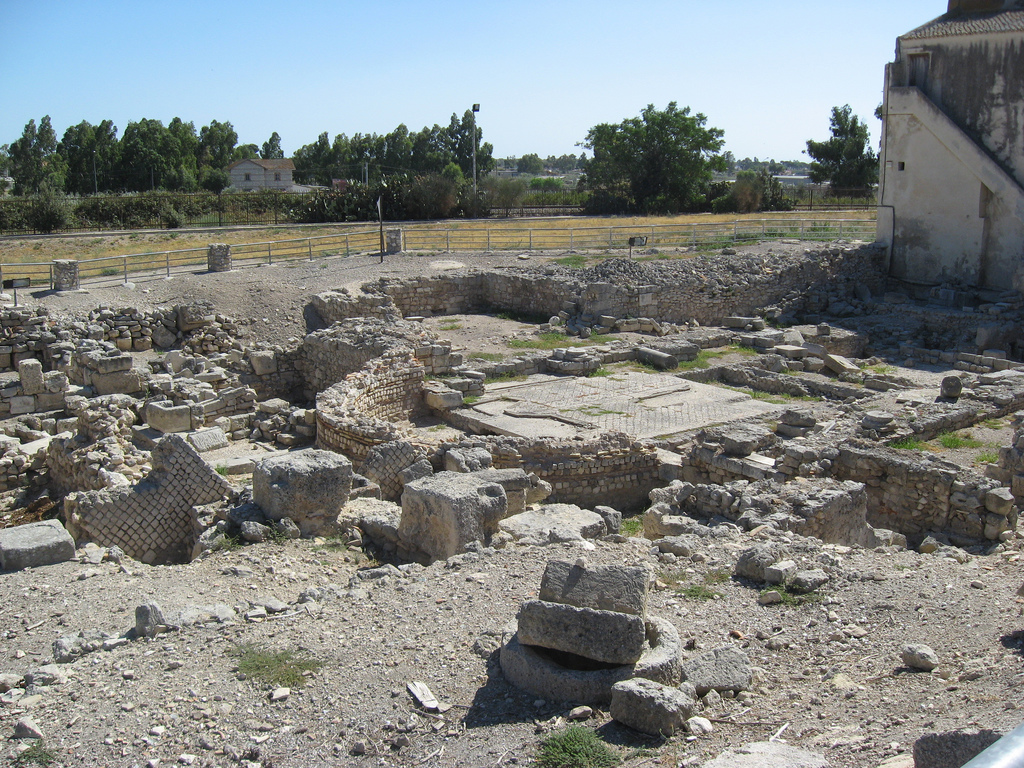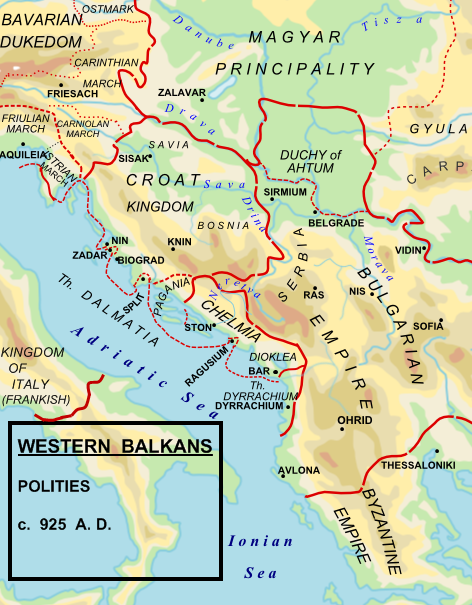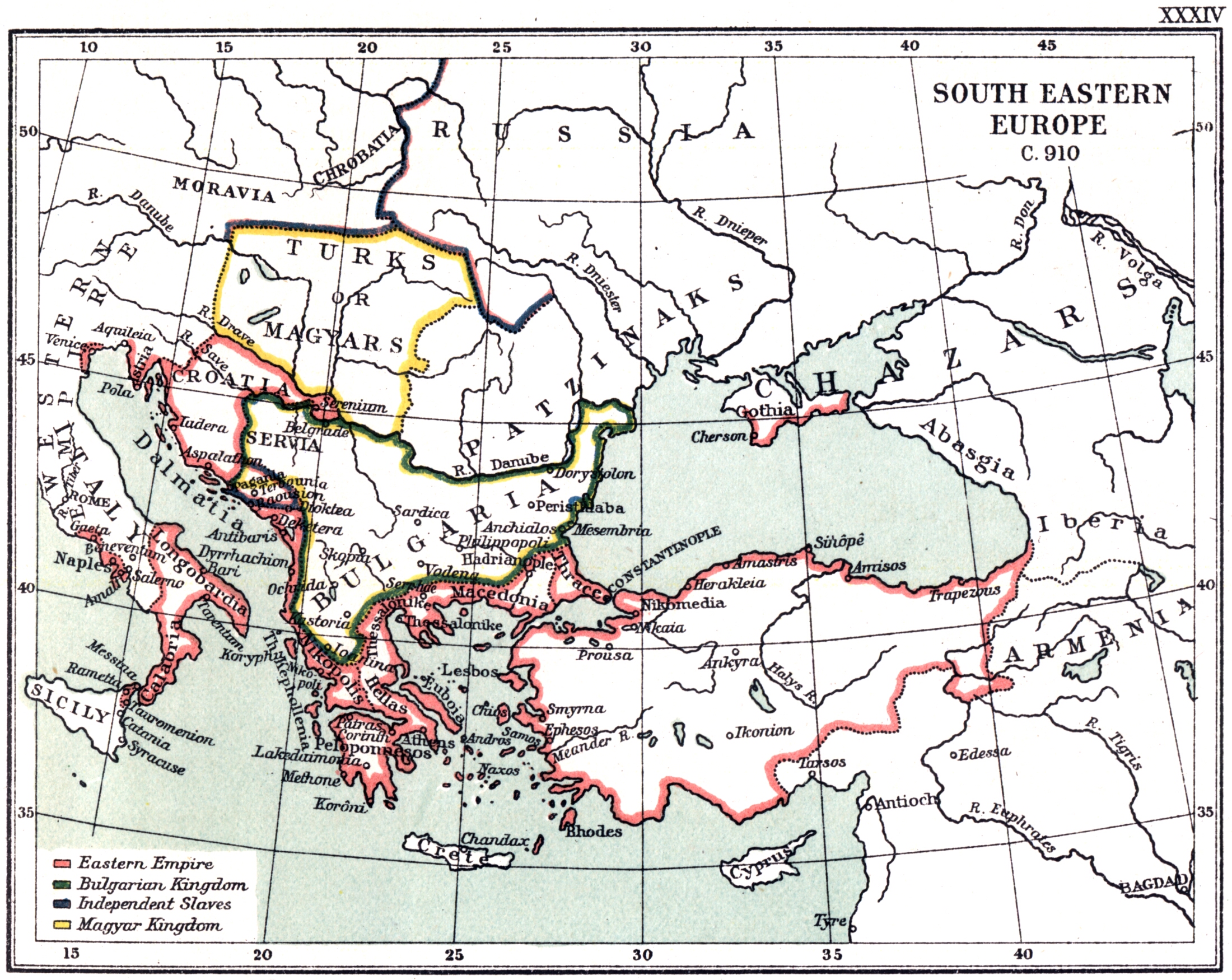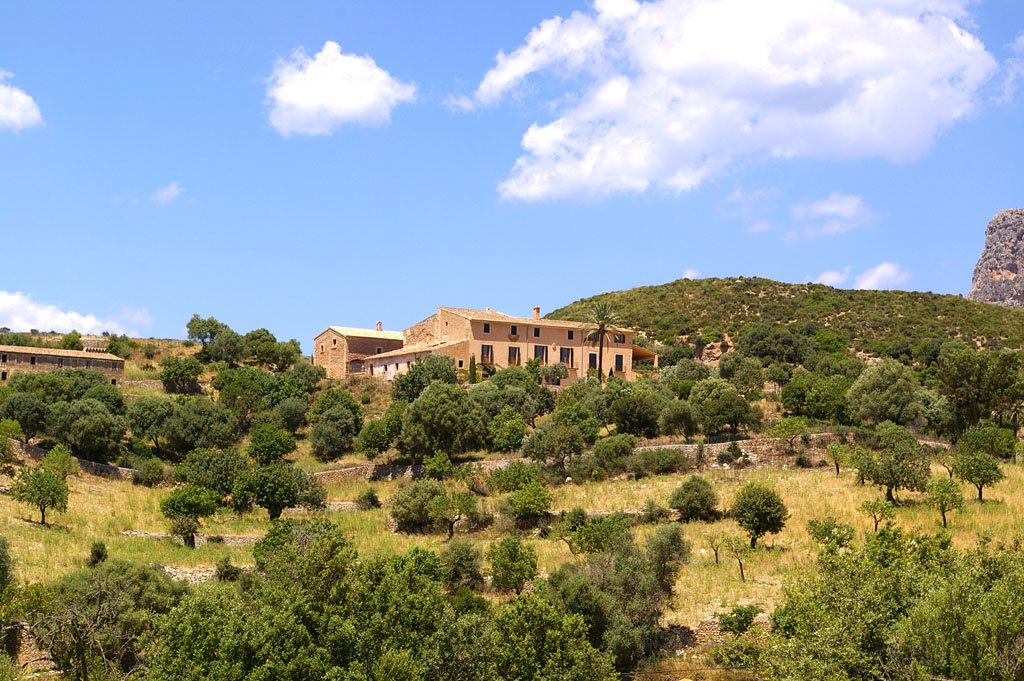|
Sipontum
Siponto ( la, Sipontum, grc-gre, Σιπιούς) was an ancient port town and bishopric in Apulia, southern Italy. The town was abandoned after earthquakes in the 13th century; today the area is administered as a ''frazione'' of the ''comune'' of Manfredonia, in the province of Foggia. Siponto is located around 3 km south of Manfredonia. History According to legend, Sipontum was founded by Diomedes, product of the union of the Homeric hero of the same name with the daughter of the king of the Daunians. Siponto was probably founded by the Daunians. Sipontum was a flourishing Greek colony, its Greek name being Sipious (Σιπιούς); having fallen into the hands of the Samnites, it was retaken about 335 BC by King Alexander of Epirus, uncle of Alexander the Great. In 189 BC it became a Roman colony with its original Sipious name still used in Byzantine times, and in 663 AD it was taken and destroyed by the Slavs. In the ninth century, Sipontum was for a time in the pow ... [...More Info...] [...Related Items...] OR: [Wikipedia] [Google] [Baidu] |
Manfredonia
Manfredonia is a town and commune of Apulia, Italy, in the province of Foggia, from which it is northeast by rail. Manfredonia is situated on the coast, facing east, to the south of Monte Gargano, and gives its name to the gulf to the east of it. its population was 56,932. 2011 History  The area of current Manfredonia was settled in ancient times by the
The area of current Manfredonia was settled in ancient times by the
|
Michael Of Zahumlje
Michael of Zahumlje (reign usually dated c. 910–935), also known as Michael Višević (Serbo-Croatian: ''Mihailo Višević'', Serbian Cyrillic: Михаило Вишевић) or rarely as Michael Vuševukčić,Mihanovich, ''The Croatian nation in its struggle for freedom and independence: a symposium'', p. 112 was a semi-independent, or independent Slavic ruler of Zahumlje, in present-day central Herzegovina and southern Croatia, who flourished in the early part of the 10th century. Prince Michael of Zahumlje had a common boundary with the Serbia and probably with the Kingdom of Croatia, but was an ally of Bulgaria. He was nevertheless able to maintain independent rule throughout at least a good part of his reign. Michael came into territorial conflict with Petar of Serbia, who expand his power to the province of Narenta or Pagania, west from the Neretva River. To eliminate the threat, Michael warned his ally, the Bulgarian Tsar Simeon I, about the alliance between Peter and ... [...More Info...] [...Related Items...] OR: [Wikipedia] [Google] [Baidu] |
Alexander Of Epirus
Alexander I of Epirus ( grc, Ἀλέξανδρος Α'; c. 371 BC – 331 BC), also known as Alexander Molossus (), was a king of Epirus (343/2–331 BC) of the Aeacid dynasty.Ellis, J. R., ''Philip II and Macedonian Imperialism'', Thames and Hudson, 1976, pp. 90–1, 156–7 As the son of Neoptolemus I and brother of Olympias, Alexander I was an uncle, and a brother-in-law, of Alexander the Great. He was also an uncle of Pyrrhus of Epirus, (Aeacides of Epirus was a cousin of Alexander I and the father of Pyrrhus). Life Neoptolemus I ruled jointly with his brother Arybbas. When Neoptolemus died in c. 357 BC, his son Alexander was only a child and Arrybas became the sole king. In c. 350 BC, Alexander was brought to the court of Philip II of Macedon in order to protect him. In 343/2 in his late 20s, Philip made him king of Epirus, after dethroning his uncle Arybbas. When Olympias was repudiated by her husband in 337 BC, she went to her brother, and endeavoured ... [...More Info...] [...Related Items...] OR: [Wikipedia] [Google] [Baidu] |
Tomislav Of Croatia
Tomislav (, la, Tamisclaus) was the first king of Croatia. He became Duke of Croatia and was crowned king in 925, reigning until 928. During Tomislav's rule, Croatia forged an alliance with the Byzantine Empire against Bulgaria. Croatia's struggles with the First Bulgarian Empire eventually led to war, which culminated in the decisive Battle of the Bosnian Highlands in 926. In the north, Croatia often clashed with the Principality of Hungary; the state retained its borders and, to some extent, expanded with the disintegrated Lower Pannonia. Tomislav attended the 925 Council of Split, convened by Pope John X, to discuss the use of Slavic languages in liturgy, and ecclesiastical jurisdiction over both Croatia and the Byzantine Theme of Dalmatia. Although the Pope sought to prohibit Slavic liturgy, the council did not agree. Jurisdiction over the region was given to the Archbishop of Split instead of Bishop Gregory of Nin. Since historical information on Tomislav is scarce, the ... [...More Info...] [...Related Items...] OR: [Wikipedia] [Google] [Baidu] |
Vineyard
A vineyard (; also ) is a plantation of grape-bearing vines, grown mainly for winemaking, but also raisins, table grapes and non-alcoholic grape juice. The science, practice and study of vineyard production is known as viticulture. Vineyards are often characterised by their ''terroir'', a French term loosely translating as "a sense of place" that refers to the specific geographical and geological characteristics of grapevine plantations, which may be imparted to the wine itself. History The earliest evidence of wine production dates from between 6000 and 5000 BC. Wine making technology improved considerably with the ancient Greeks but it wasn't until the end of the Roman Empire that cultivation techniques as we know them were common throughout Europe. In medieval Europe the Church was a staunch supporter of wine, which was necessary for the celebration of the Mass. During the lengthy instability of the Middle Ages, the monasteries maintained and developed viticultural prac ... [...More Info...] [...Related Items...] OR: [Wikipedia] [Google] [Baidu] |
Olive
The olive, botanical name ''Olea europaea'', meaning 'European olive' in Latin, is a species of small tree or shrub in the family Oleaceae, found traditionally in the Mediterranean Basin. When in shrub form, it is known as ''Olea europaea'' 'Montra', dwarf olive, or little olive. The species is cultivated in all the countries of the Mediterranean, as well as in Australia, New Zealand, North and South America and South Africa. ''Olea europaea'' is the type species for the genus ''Olea''. The olive's fruit, also called an "olive", is of major agricultural importance in the Mediterranean region as the source of olive oil; it is one of the core ingredients in Mediterranean cuisine. The tree and its fruit give their name to the plant family, which also includes species such as lilac, jasmine, forsythia, and the true ash tree. Thousands of cultivars of the olive tree are known. Olive cultivars may be used primarily for oil, eating, or both. Olives cultivated for consumption ar ... [...More Info...] [...Related Items...] OR: [Wikipedia] [Google] [Baidu] |
Animal Husbandry
Animal husbandry is the branch of agriculture concerned with animals that are raised for meat, fibre, milk, or other products. It includes day-to-day care, selective breeding, and the raising of livestock. Husbandry has a long history, starting with the Neolithic Revolution when animals were first domesticated, from around 13,000 BC onwards, predating farming of the first crops. By the time of early civilisations such as ancient Egypt, cattle, sheep, goats, and pigs were being raised on farms. Major changes took place in the Columbian exchange, when Old World livestock were brought to the New World, and then in the British Agricultural Revolution of the 18th century, when livestock breeds like the Dishley Longhorn cattle and Lincoln Longwool sheep were rapidly improved by agriculturalists, such as Robert Bakewell, to yield more meat, milk, and wool. A wide range of other species, such as horse, water buffalo, llama, rabbit, and guinea pig, are used as livestock in some ... [...More Info...] [...Related Items...] OR: [Wikipedia] [Google] [Baidu] |
Trinitapoli
Trinitapoli is a town and ''comune'' in the province of Barletta-Andria-Trani in the Apulia region of southeast Italy. A few kilometres from the town are the ruins of Salapia (later called Salpia and Salpi), which was already a bishopric by 314, when its bishop Pardus took part in the Council of Arles. The town flourished from the 11th to the 13th centuries but its later decline was sealed when the episcopal see was suppressed in 1547 and its territory united to that of Trani Trani () is a seaport of Apulia, in southern Italy, on the Adriatic Sea, by railway west-northwest of Bari. It is one of the capital cities of the Province of Barletta-Andria-Trani. History Overview The city of ''Turenum'' appears for the fir ....On the history of the diocese see Pietro di Biase, ''Puglia medievale e insediamenti scomparsi''. ''La vicenda di Salpi'', Fasano, 1985, pp. 233-254; Pasquale Corsi, Pietro di Biase, ''Documenti vaticani relativi alla diocesi di Salpi (1237-1544)'', Trinitapoli ... [...More Info...] [...Related Items...] OR: [Wikipedia] [Google] [Baidu] |
Salapia
Salapia (also called Salpe and Salpi) is an ancient settlement and bishopric in Daunia, Italy near Cerignola and Manfredonia. The settlement was probably built for and named after the salt marsh - the ancient Lake Salpi is now Saline di Margherita di Savoia. Salapia is mentioned by Pliny the Elder, Ptolemy and probably the "Elpia" of Strabo, but according to Smith (1857) in relation to the later town, and not an earlier original settlement. Bishop of Salpi Salapia had a bishop as early as A.D. 314, but the bishopric was later removed to Trani.Johannes Boersma -Mutatio Valentia: The late Roman baths at Valesio, Salento -2006 Page 43 "Salapia, for instance, had a bishop as early as A.D. 314" The titular bishopric "Bishop of Salpi" remained active till the Council of Trent The Council of Trent ( la, Concilium Tridentinum), held between 1545 and 1563 in Trento, Trent (or Trento), now in northern Italian Peninsula, Italy, was the 19th ecumenical council of the Catholic Church. Promp ... [...More Info...] [...Related Items...] OR: [Wikipedia] [Google] [Baidu] |
Spinazzola
Spinazzola is a town and ''comune'' in the province of Barletta-Andria-Trani, Apulia, southern Italy. People *Pope Innocent XII was born here in the castle of the Pignatelli family, now destroyed. *Michele Ruggieri (1543–1607), Jesuit missionary in China, first European sinologist, was born in Spinazzola. Twin cities * Verbania, Italy Italy ( it, Italia ), officially the Italian Republic, ) or the Republic of Italy, is a country in Southern Europe. It is located in the middle of the Mediterranean Sea, and its territory largely coincides with the homonymous geographical re ... References External linksOfficial websiteGenealogical Data from Spinazzola Cities and towns in Apulia {{Puglia-geo-stub ... [...More Info...] [...Related Items...] OR: [Wikipedia] [Google] [Baidu] |
Foggia
Foggia (, , ; nap, label= Foggiano, Fògge ) is a city and former ''comune'' of Apulia, in Southern Italy, capital of the province of Foggia. In 2013, its population was 153,143. Foggia is the main city of a plain called Tavoliere, also known as the "granary of Italy". History The name "''Foggia''" (originally ''Focis'') probably derives from Latin "''fovea''", meaning "''pit''", referring to the pits where wheat was stored. The name's etymology remains uncertain however, as it could as well stem from "''Phocaea''", or possibly probably from the Medieval Greek word for "''fire''", which is "''fotia''", as according to legend the original settlers of the 11th century AD were peasants, allegedly after having iraculouslydiscovered there a panel portraying the Madonna Nicopeia, on which three flames burnt. The area had been settled since Neolithic times, and later on a Daunian settlement known as Arpi (in Greek ''Argos Hippium'' or ''Ἀργόριππα'') existed nearby, clos ... [...More Info...] [...Related Items...] OR: [Wikipedia] [Google] [Baidu] |
Finca
In English usage, a ''finca'' (; ) refers to a piece of rural or agricultural land, typically with a cottage, farmhouse or estate building present, and often adjacent to a woodland or plantation. Overview Especially in tourism, the term has recently gained the colloquial meaning of a holiday home in a rural setting, situated on the Spanish mainland, the Balearics, and the Canary Islands, and throughout the countries of Spanish-speaking Latin America Latin America or * french: Amérique Latine, link=no * ht, Amerik Latin, link=no * pt, América Latina, link=no, name=a, sometimes referred to as LatAm is a large cultural region in the Americas where Romance languages — languages derived f .... Fincas can typically look back on an extensive development history, and are often older than 300 years. In some regions, however, especially on the Balearics, new buildings are erected. References External links Real estate in Spain Country estates {{Spain-stub ... [...More Info...] [...Related Items...] OR: [Wikipedia] [Google] [Baidu] |






